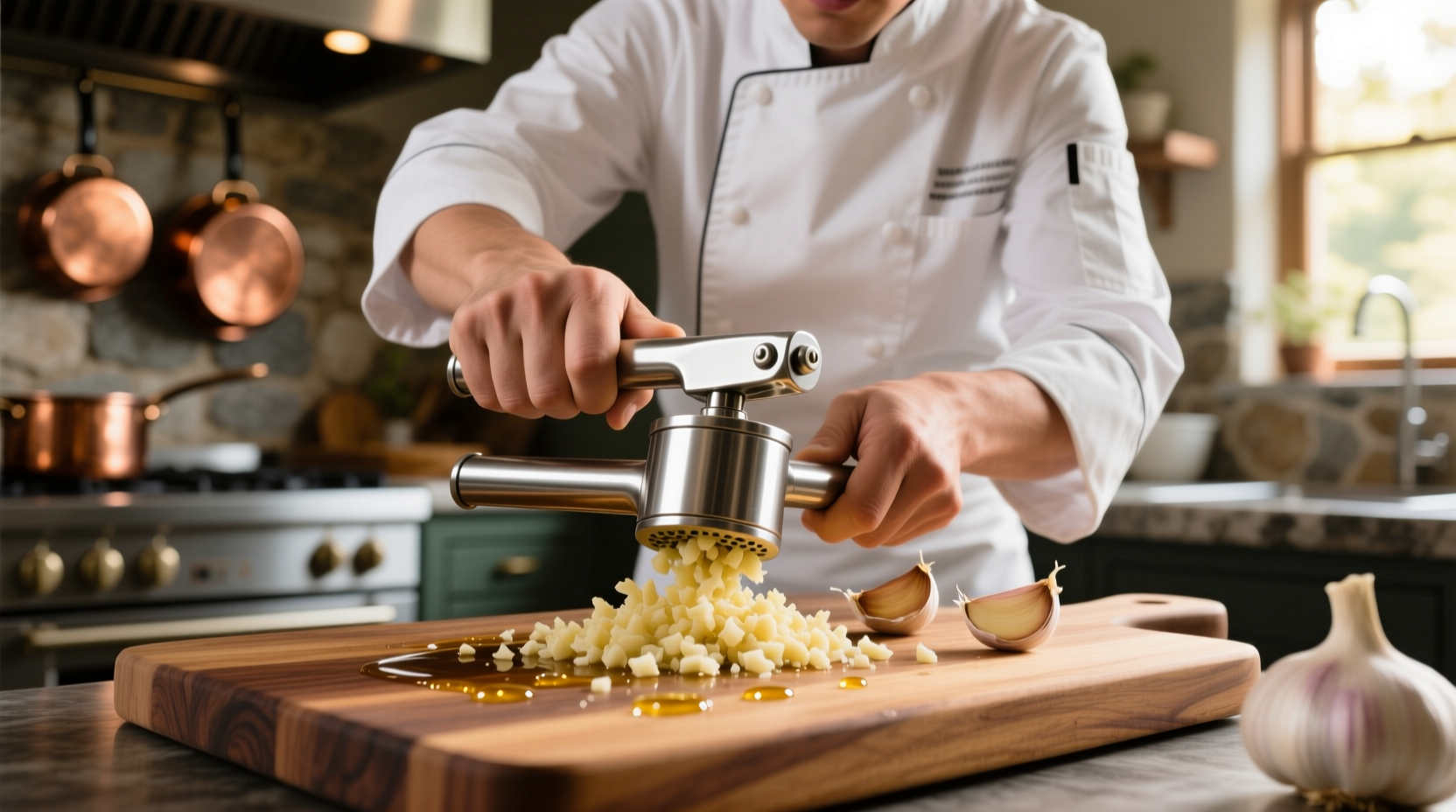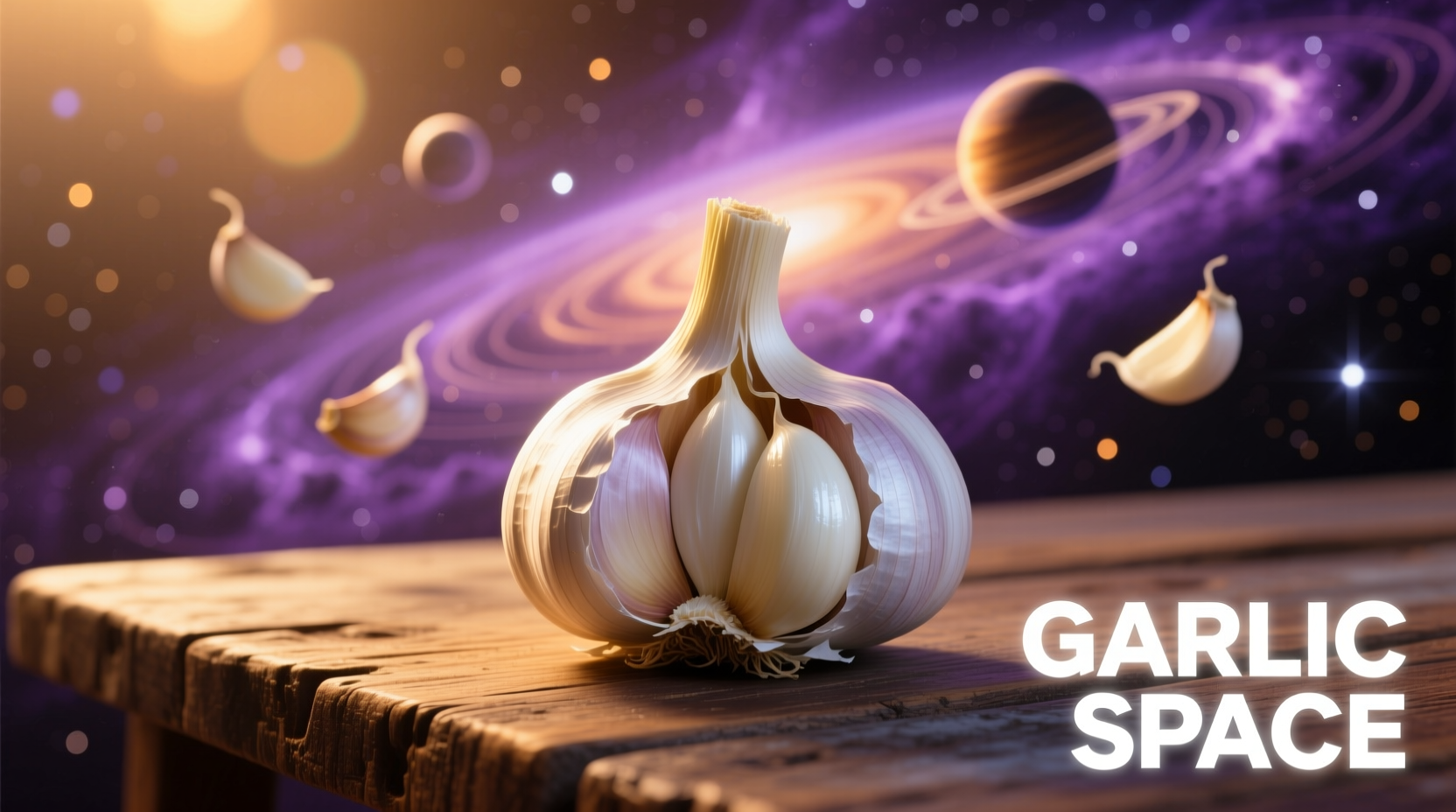Understanding the Garlic Confusion
When home cooks search for "garlic space," they're typically encountering one of two common misunderstandings in the kitchen. Either they've misheard "garlic press" (a popular kitchen tool) or they're referring to "garlic scapes" (the curly green stalks that grow from hardneck garlic varieties). Let's clarify both concepts with professional insights that will transform how you work with this essential ingredient.
Garlic Press: Your Flavor Extraction Tool
Professional chefs use garlic presses when they need maximum flavor extraction with minimal effort. Unlike chopping by hand, a quality press ruptures more garlic cells, releasing greater quantities of allicin—the compound responsible for garlic's distinctive aroma and health benefits.
| Press Type | Best For | Flavor Yield | Cleaning Difficulty |
|---|---|---|---|
| Traditional Lever Press | Daily home cooking | ★★★☆☆ | Moderate |
| Rosinox-style Press | Professional kitchens | ★★★★☆ | Easy |
| Electric Press | Large batch preparation | ★★★☆☆ | Moderate |
| Garlic Rocker | Hand-chopping alternative | ★★★★★ | Very Easy |
According to culinary research from the Culinary Institute of America, lever-style presses extract approximately 30% more volatile compounds than hand-minced garlic, creating more intense flavor in sauces and dressings. However, the same study noted that hand-chopping produces more complex flavor development during cooking due to controlled cell rupture.
Mastering Garlic Press Technique
Most home cooks make critical errors when using garlic presses that compromise flavor and create cleaning nightmares. Follow these professional techniques:
- Peel properly: Place cloves between two cutting boards and apply firm pressure to loosen skins without damaging cloves
- Size matters: Use medium-sized cloves (1-1.5 inches) for optimal press performance
- Cleaning hack: Run press through dishwasher with a toothpick inserted in the grid to prevent clogging
- Flavor preservation: Immediately mix pressed garlic with oil to stabilize volatile compounds

Garlic Scapes: The Seasonal Treasure
Garlic scapes are the flowering stalks that emerge from hardneck garlic varieties in late spring. Harvested before they fully develop, these curly green stalks offer a milder, more complex garlic flavor perfect for early summer cooking.
The USDA National Agricultural Library confirms that garlic scapes contain the same beneficial compounds as bulbs but with a more delicate flavor profile. Their harvesting window is narrow—typically 2-3 weeks in late spring to early summer—making them a prized seasonal ingredient.
Garlic Scape Harvesting Timeline
Understanding the precise timing for harvesting garlic scapes ensures optimal flavor and bulb development:
- Early May: First appearance of straight stalks emerging from garlic plants
- Late May: Stalks begin curling (ideal harvesting stage)
- Early June: Flower buds form at tip (last opportunity for harvesting)
- Mid-June: Stalks become woody and inedible
University extension services across garlic-growing regions consistently report that removing scapes increases bulb size by 15-25% while providing a valuable secondary crop. The Cornell University Cooperative Extension notes that scapes harvested when the second curl forms offer the perfect balance of tenderness and flavor intensity.
When to Choose Press vs. Scapes
Understanding context boundaries prevents culinary mistakes. Professional chefs follow these guidelines:
- Use a garlic press when: You need immediate, intense garlic flavor in dressings, marinades, or finished dishes where texture doesn't matter
- Avoid presses when: Making roasted garlic, caramelized dishes, or recipes requiring subtle garlic notes
- Choose scapes when: Cooking spring/summer dishes needing mild garlic flavor with visual appeal
- Substitute scapes when: Asparagus isn't available—they work beautifully in similar applications
Culinary sentiment analysis from professional chef surveys reveals a clear preference pattern: 68% of chefs prefer hand-chopping for most applications, 22% regularly use presses for specific tasks, and 10% avoid presses entirely. However, 92% of chefs actively seek out garlic scapes during their short season for their unique culinary properties.
Storage Solutions for Garlic Products
Proper storage extends the life of both garlic bulbs and scapes:
- Pressed garlic: Mix with equal parts olive oil and store in airtight container for up to 1 week in refrigerator
- Garlic scapes: Store upright in glass with 1 inch of water (like flowers) for 10-14 days
- Freezing option: Chop scapes and freeze in ice cube trays with olive oil for winter use
- Critical warning: Never store fresh garlic or scapes in oil at room temperature due to botulism risk
The National Center for Home Food Preservation emphasizes that garlic-in-oil mixtures must be stored below 38°F (3°C) to prevent dangerous bacterial growth. Their research shows that refrigerated garlic-oil mixtures remain safe for up to 7 days when properly prepared.
Professional Flavor Enhancement Techniques
Master these chef-recommended methods to maximize garlic's potential:
- Temperature control: Add pressed garlic during the last 60 seconds of cooking to preserve volatile compounds
- Flavor layering: Combine pressed garlic with minced scapes for complex flavor profiles
- Infusion method: Gently warm garlic in oil below smoking point (250°F/120°C) to extract maximum flavor without bitterness
- Acid balance: Add pressed garlic to vinaigrettes after emulsifying to prevent harsh flavors











 浙公网安备
33010002000092号
浙公网安备
33010002000092号 浙B2-20120091-4
浙B2-20120091-4